An outline drawn with a fine brush and a powerful design made of complex layers of colorful paint on white porcelain are the classic hallmarks of KUTANI pottery called Gosaide (five colors) and Aote (four colors without red).
The beautiful indigo painting called Sometsuke (blue&white) is expressed by skilled manipulation of a brush saturated with ink. Ink pushed out of a paint brush pulls back into the brush after depositing a mark on the clay. This push and pull of ink and brushstroke produces gradations of dark and light, creating a visage of flower petals and leaves.
Many pieces using the red paint style (Akae) include symbols of Kisshou Mon (representing good fortune) on the surface of porcelain using a fine-drawing technique called Saibyou-Ga. The dynamic and sophisticated pieces decorated with gold and red paint are called Kinrande.
The production of Japanese porcelain started in the town of Arita in Kyushu.
The origin of Arita pottery dates to 1616, when Sanpei Li found suitable clay for porcelain production. It was a tumultuous period. Only a few years before, the government of Japan (Edo-Shogunate) had banned Christianity, and within twenty years (1636) the Shimabara Rebellion pitted the Tokugawa Shogunate against the Roman Catholics and Ronin rebels. Finally, the Sakoku Edict of 1635 closed the country from the rest of the world. But, even throughout this difficult political climate, the production of porcelain continued and was exported to world.
In 1655, after receiving orders from Toshiie Maeda, Saijiro Goto visited the town of Arita in Hizen to learn their pottery making technique. Kutani was the technique that Goto brought back from Arita. As soon as perfect clay was found in the land of Kutani in 1655, many of beautiful art pieces were created utilizing the Arita technique.
However, within less than 50 years, Kutani had abruptly disappeared without explanation. In 1807, about 100 years later, the Kaga-clan resurrected the Kutani technique. The Yoshida-Ya kiln and others are now famous.
I wonder at the reasons behind this interrupted history. This is how I imagine the history of Kutani unfolded:
The persecution of Christians in Japan began in 1587 under the direction of Hideyoshi Toyotomi. After Christianity was banned in 1613 and the Shimabara Rebellion failed in 1637, the only choice for Japanese Christians was to hide, and many headed to the land of Kaga at the invitation of Toshiie Maeda.
The great Kaga-clan temple, Daishouji, is now written (in Chinese characters) as “big holy temple”. The word “holy” began to be used only when the land was governed by Maeda, even though it had been written “right” or “win” before. There are theories that Maeda meant it to signify a holy place for Christians.
The Arita craftsmen were part of the migration of Japanese Christians to Kaga. They hid in the mountains of Kutani, and their Christian beliefs are reflected in the high quality pieces that they created. Many pieces of ancient Kutani include hidden crosses in their designs.
The name of the land itself, Kutani (written as "Nine Valleys" in Chinese characters), is possibly named after the closest place to the cross (god).
The reason of their vanishing within fifty years may be attributed to them hiding from the Edo Shogunate government.
After 100 years, Kutani pottery was restarted by the Kaga clan. Yoshida-Ya built a kiln at the same site of the ancient Kutani kiln. The hidden cross designs included on the ancient Kutani pieces reappeared on the new Kutani copies of the original pieces. The cross, of course, is the symbol of their Christian belief.
When they decided to shut down Kutani production, it's possible that they had been promised that Kutani pottery would be revived 100 years later.
Naoki Uemura
謎多き九谷焼きの世界
毛が一本という細さの筆先で描かれた輪郭、白い磁器に上絵の具を盛り上げるように施した迫力のあるデザインの色絵は、五彩手、青手と呼ばれる九谷の代表的なスタイル。
呉須の藍色が美しい染付は、筆にたっぷりと含ませた絵の具を自在に操り表現される。しなやかに向きを変え筆先から押し出された絵の具は、適量を残してまた筆の中へ戻される。それが、描かれた花弁や葉に自然な濃淡を作り出す。
赤絵は、細描と呼ばれる技法で吉祥紋などを一面に描き埋めたものが多い。
その上にさらに金で装飾されたものを金襴手と呼ぶ。
細かさと大胆さの両方を兼ね備えた工芸品である。
1655年に前田利治の命を受け、後藤才次郎が肥前の有田に赴き、その技法を持ち帰って始めたのが九谷焼である。
しかし、50年後、突然途絶えてしまう。理由はわかっていないというのが通説。
廃窯から約100年後、1807年に加賀藩は、九谷焼を再興する。吉田屋窯などが有名だ。
日本の磁器生産は、九州有田で始まる。
有田焼きの起源が1616年、李参平が磁器を作るのに適した陶土の山を発見したのが始まりとされているが、そのほんの数年前に江戸幕府による禁教令が出された。
1637年には島原の乱、そして鎖国と目まぐるしく時代が変わって行く中で、磁器の生産は盛んに行われて、海外に輸出されて行った。
1655年に九谷の地で磁器生産に適した陶土が見つかると、有田から技術を学んですぐさま素晴らしい工芸品が出来上がる。それには何らかの理由があったのではないだろうかと推測する。
この先は、私の想像によるところが大きいので、そのつもりで読んでいただきたい。
1588年にキリシタン大名の高山右近が前田利家に招かれて加賀に赴く、時はバテレン追放令が秀吉によって出された頃である。
その後の1613年の禁教令、1637年の島原の乱などを逃れた隠れキリシタンの人々にとって向かうべきは、加賀の国であったのだろう。
大聖寺藩の大聖寺は昔、大正寺、大勝寺とも書いたようだが、前田の領となって同じ音ながら聖の文字を使うようになったのには、キリシタンの聖地とした事を意味したのかもしれない。
有田で陶工として働いていた隠れキリシタンの人間が逃れて九谷の山に隠れ住んでいた。だからこそ到達出来た工芸の最高峰の質と信仰の深い人たちの描いた不思議なデザイン。
古九谷の中には、十字架を隠し描いたと思わせるものも多い。
九谷という地名自体、十に一番近い場所を意味してつけられた地名なのではないか。
50年経って忽然と消える理由も、江戸幕府に隠れキリシタンが集っている事を悟られる前に自らより深くその身を隠して行ったのではないか。
100年の後、加賀藩によって再興された九谷焼、古九谷の窯跡に作られた吉田屋窯。
古九谷のデザインの中に隠され描かれたイコンや十字架は、写しという形で復活し再び陽の目を浴びることになる。
それは信仰のシンボルとなったのであろう。
もしかしたら、50年で廃窯を決めた時に100年後の復活は約束されていたのかも知れないと思いをはせるのである。








